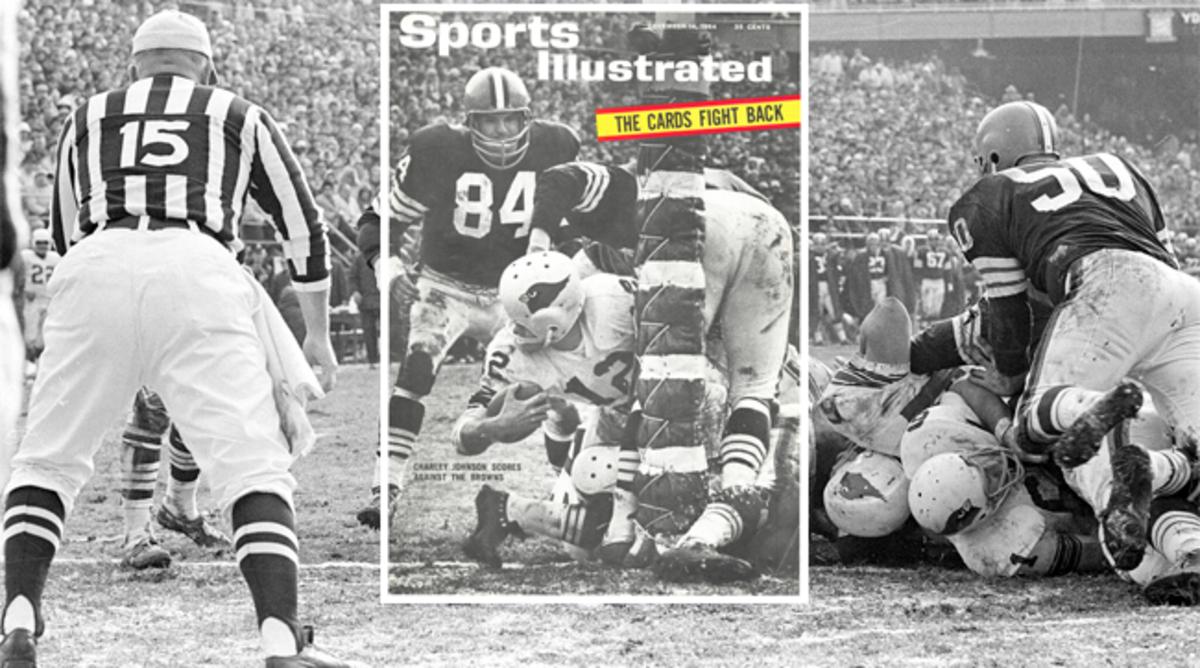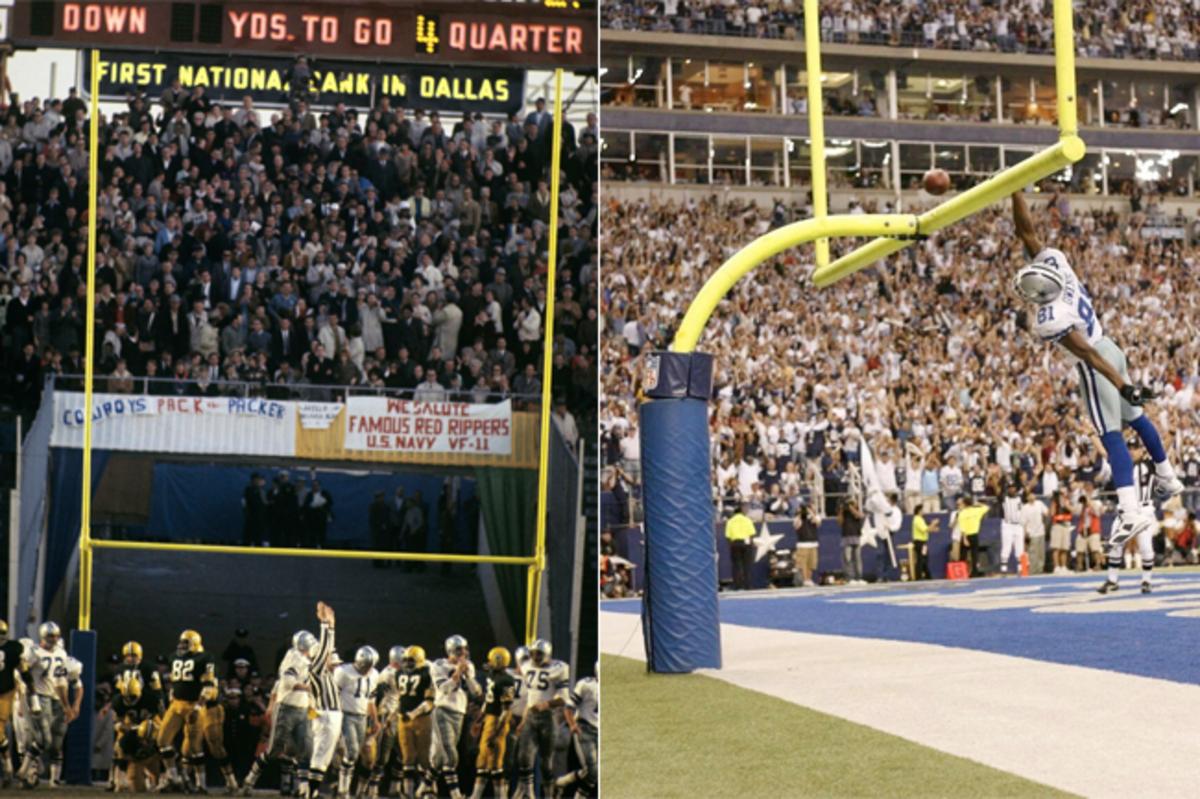The History of NFL Goal Posts: Excitement And Danger

The cover of the Dec. 14, 1964 issue of Sports Illustrated features an iconic image for a bygone era of the NFL. Charley Johnson, the 26-year-old quarterback of the St. Louis Cardinals, lunges into the end zone. A Browns defender hurls his body over him, and a Cardinals lineman is sandwiched underneath the pile. Chunks of grass fall onto the mangling of limbs at Busch Stadium. And right in the middle of it all is the ultimate occupational hazard: the goal posts.

Most young NFL fans probably don’t know this—and the details certainly surprised this millennial reporter—but the uprights were on the goal line until 1974. And up until 1967, there were actually two metal poles to contend with, as the uprights were shaped like an ‘H.’
“It affected the game quite a bit,” says Johnson, who retired in 1975 and went on to become a chemical engineering professor at his alma mater, New Mexico State.

When the NFL was founded in 1920, it used the ‘H’ design for its uprights and placed them on the goal line. In 1927, the league moved the posts back 10 yards, to the back of the end zone. The reasoning? That’s what the NCAA did. At the time, the NFL simply followed the college rulebook. But that was short-lived. In 1933, the NFL finally wrote its own rulebook. And in an effort to increase field goal attempts—the general feeling was that there were too many ties—the NFL moved the uprights back to the goal line.
As Ben Austro, author of the popular NFL officiating blog “Football Zebras” notes: “a receiver could use the goalpost as a pick, just as they did with the umpire.”
• 1967 WEEK: The Greatest Player Who Never Was
“The goal line goal post was part of offensive strategy,” says Don Criqui, the famed broadcaster who began calling NFL games in 1967. “It was an extra blocker on goal-one runs and crossing patterns. Receivers Lance Alworth of the Chargers and Bernie Casey of the LA Rams were two of the best I saw at using the goal post to screen defenders on pass patterns. Goal line goal posts brought excitement and danger.”
Adds Johnson: “In the passing game, receivers would grab ahold of the post, spin around, and go the other direction pretty quick. I also used it a couple times on quarterback sneaks, like in that photo in Sports Illustrated, where I could use the goal post as a screen and go on the opposite side of the nose tackle.”
If a pass hit the metal uprights, it would automatically be ruled incomplete. This was famously applied in Super Bowl VII when, in the fourth quarter, Washington quarterback Billy Kilmer missed a wide-open Jerry Smith in the end zone and bounced the ball off the post. The Dolphins won, 14-7, though it should also be noted Kilmer was intercepted three times that day.
“Oh, it happened all the time,” says Johnson. “If you were on your 2-, 3-, 4-, 5-yard line, you drop back and there’s a good chance you’d hit it . . . and usually when I threw it, I did.”
• 1967 WEEK: Brawls, Booze and True Believers—The Saints’ Wild First Season
A new wrinkle was introduced in 1967. Joel Rottman, a retired newspaper distributer and a hobbyist inventor, was having lunch at the Queen Elizabeth hotel in Montreal with his friend, Alouettes coach Jim Trimble. After staring a bit too long at his fork and imagining what it would look like if the two inside prongs were knocked out, Rottman blurted out an idea: what if the football goal post modeled a fork’s shape? According to a 2010 account in the Florida Sentinel, Rottman believed “slingshot” goal posts would be more aesthetically pleasing—and a bit safer. Rottman brandished his new invention at Expo ’67, the world fair held in Montreal, and earned a meeting with NFL commissioner Pete Rozelle.

In the years to come, the kicking game became too commonplace. In 1973, a record 543 field goals were made on 861 attempts—an average of five per game. Field goals accounted for 23% of the scoring that season, compared to 15% in 1969, the NFL’s last year before the AFL-NFL merger. Owners wanted more touchdowns. When players returned from the 1974 strike, they found the goal posts in the back of the end zone, which did the trick to curtail the kicking game. In 1974, only 335 field goals were made—or 15% of the scoring.
It created more offense, too. As Paul Brown told SI in 1974: “The whole end zone is open for pass patterns now; the goalposts were, in effect, another safety man when you got inside the 20. You couldn’t run or pass around them. And it was hard to punt or pass coming out of the end zone.”
For the last 42 seasons, the NFL hasn’t found a reason to revert—and it likely never will given the safety issues.
“And that’s all I know about goal posts,” says Johnson. “I guess it’s more interesting than I thought.”
• Question? Comment? Story idea? Let us know at talkback@themmqb.com
